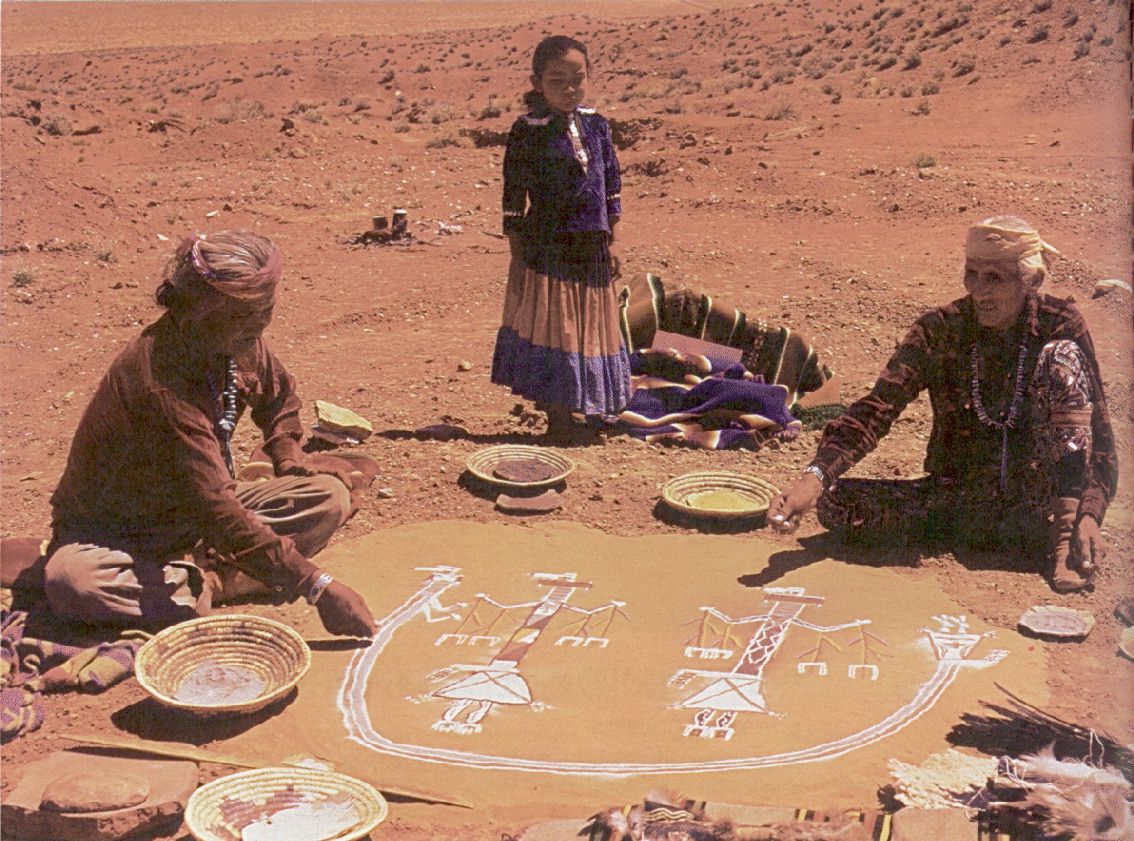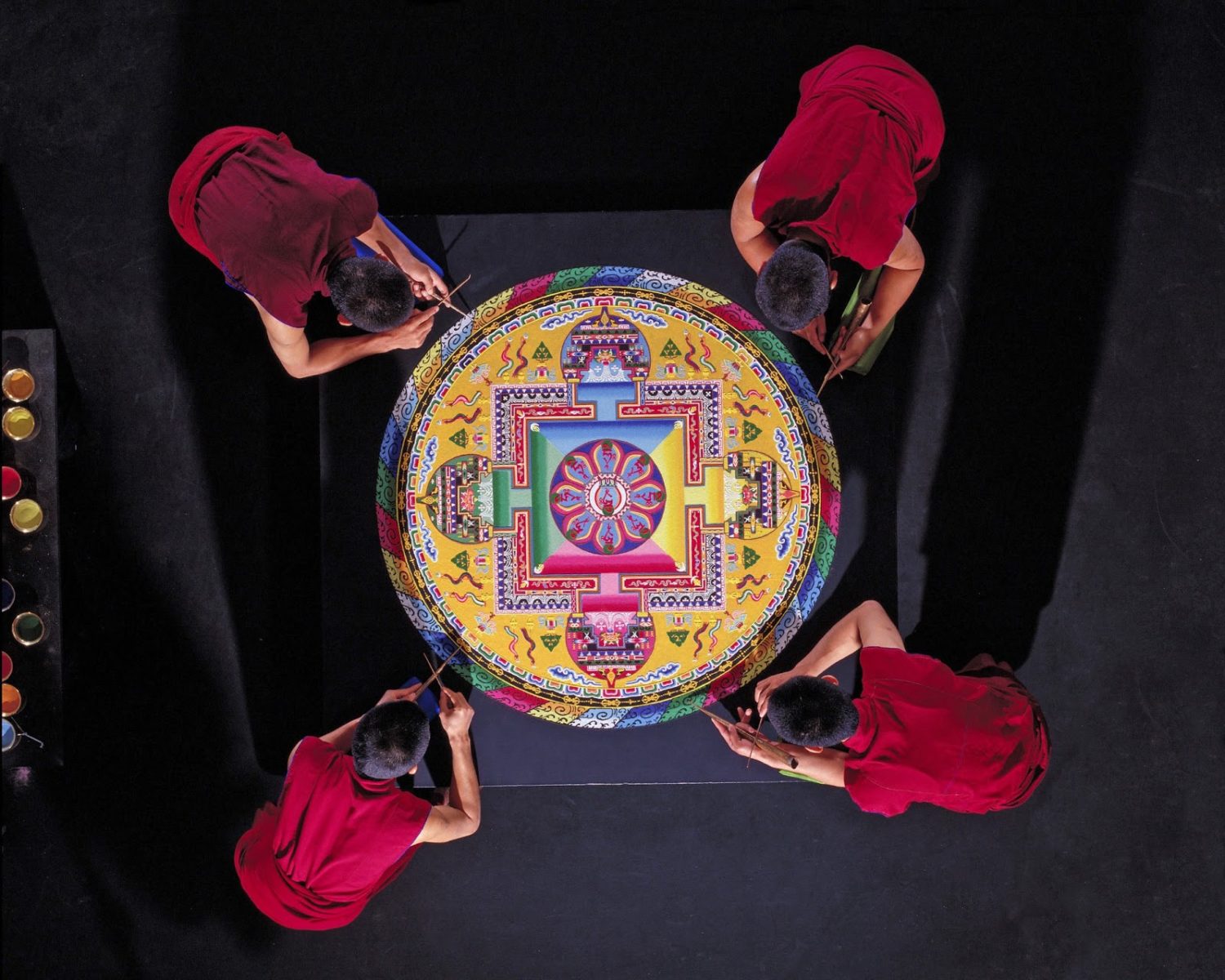Stories In The Sand: A History Of The Indigenous Painting Form
By Something CuratedSandpaintings have an important place in the cultural history of numerous ethnic communities and religious groups around the world. These largely ephemeral works are often closely connected with rituals, from religious sacraments to healing ceremonies, as well as functioning as a means of storytelling. Among those who are known to traditionally practice the art form are Native Americans, Tibetan and Buddhist monks, as well as Indigenous Australians, and certain groups of Latin Americans and South Asians. Indigenous Australian art has a history that covers more than 30,000 years, boasting an expansive range of native traditions and styles. These have been studied in recent decades and their complexity has gained increased recognition.

Art-making is one of the key rituals of Aboriginal culture; it was and still is used to mark territory, record histories, and, crucially, tell stories. For generations, the people living in desert and coastal regions painted their sacred art on the ground, on cave walls and rock faces, and on religious objects and carvings. They used natural ochres to apply customary designs and patterns, often incorporating spirals and dots, on their bodies as well as creating huge ceremonial ground paintings using coloured sands. These traditions continue with different media and in various different forms today. The contemporary painting of the Central and Western Deserts is part of this enduring tradition.
In the sandpainting of Southwestern Native Americans, the best known of which are the Navajo, traditionally, the community healer, or Hatałii, paints loosely upon the ground of where the ceremony takes place, or on a buckskin or cloth tarpaulin, using various coloured sands. There are over 600 different traditional designs for sandpaintings known to the Navajo. In the culture, the paintings are not viewed as stagnant objects, but rather as spiritual, living beings to be treated with reverence. The colours for the paintings are usually accomplished with naturally coloured sand, crushed gypsum, yellow ochre, red sandstone, charcoal and a mixture of charcoal and gypsum, which creates a blue tinge.

Often, the paintings feature images of Yeibicheii, translating to the Holy People. The order and symmetry of the painting symbolise the harmony that a patient wishes to restore in their life. The accuracy of a sandpainting is believed to determine its efficacy as a therapeutic tool. It is thought that the sandpainting acts as a portal to attract the spirits and allow them to come and go. Practitioners believe sitting on the sandpainting helps the patient to absorb spiritual power, while in turn the Yeibicheii will absorb the illness and take it away. Afterward, when the sandpainting has served its purpose, it is considered to be toxic, since it has absorbed the sickness. For this reason, the painting is immediately erased.
Tibetan Buddhist sandpaintings usually depict mandalas. In Tibetan, the works are called dul-tson-kyil-khor. The sand is meticulously applied on a large, flat table. The construction process takes several days, and similar to Navajo tradition, the sandpainting is destroyed shortly after its completion. This is done as a teaching tool and metaphor for the impermanence of all life. The mandala painting process begins with an opening ceremony, during which the lamas, or Tibetan priests, consecrate the site and call forth the forces of goodness. On the first day, the lamas begin by drawing an outline of the mandala.

The following days see the laying of the coloured sands, executed by pouring the sand from traditional metal funnels called chak-pur. Each monk holds a chak-pur in one hand, while running a metal rod on its serrated surface; the vibration causes the sands to flow like liquid. Formed of traditional prescribed iconography that includes geometric shapes and a multitude of ancient spiritual symbols, a primary purpose of the work is to reconsecrate the earth and its inhabitants. When the meditation is complete, the sand painting is ceremoniously destroyed and the sand is then gathered and taken to a body of water for offering.
Feature image: Navajo Indians sand painting, March 26, 1941, at the exhibition, “Indian Art of the United States.” The Museum of Modern Art Archives, New York. Photo: Eliot Elisofon.